COUNTRY FACTORS
Political Environment
Since 1930 the Dominican Republic was governed by Rafael Leonidas Trujillo which served officially as President until his assassination in 1961. The first Constitution is dated 1966 establishing a presidential system of governance. The current President Danilo Medina, elected in 2012 by direct suffrage, holds the executive power, while the legislative power belongs to the Congreso Nacional Bicameral composed by the Senate (Senado) whose member are elected by the Provinces and a House of Representatives (Cámara de Diputados). Confidential – for the exclusive use of [•], only Page 20 of 34 Hydroelectric Power Plant “Paso Bajito” – Jimenoa River – Dominican Republic Project Information Memorandum – draft copy 30.08.2013 The Supreme Court of Justice (Suprema Corte de Justicia) represents the judicial body. It is constituted by 9 Judges, 5 Tribunal of Appeal and Courts of First Instance (one for each judicial district). The most important political parties are:
- Partido Revolucionario Dominicano (PRD)
- Partido de la Liberacion Dominicana (PLD
- Partido Reformista Social Cristiano (PRSC)
Economic Overview
During the period 1992 – 2012 the GDP increased on average by 15% and in the last four years it increased on average by 10,3%. The sector which contributed the most on GDP growth is Services, which increased on average by 10.6% in the last four years and by 18.5% in the last ten years, as better highlighted in the figure below. Services represents also the most important sector in GDP development and tourism sub-sector contribution in GDP is 8%. Agriculture represents 7,6% of GDP and manufacturing industry represents 21% of GDP.
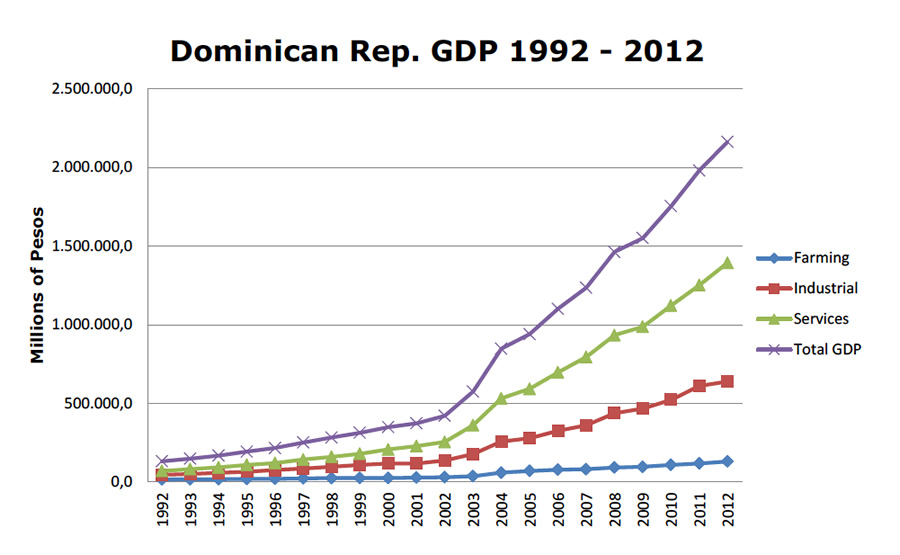
According to the projection elaborated by the Ministry of Economy, Planning and Development, the national economy shall growth by 3% in 2013 and by 5% in 2014. Starting from 2015 the GDP is expected to growth by 5,5%. In the same period population has grown on average by 1,8% and per capita GDP grew on average by 7,6% but in the last four years the growth rate of per capita GDP was on average equal to 4,7%.
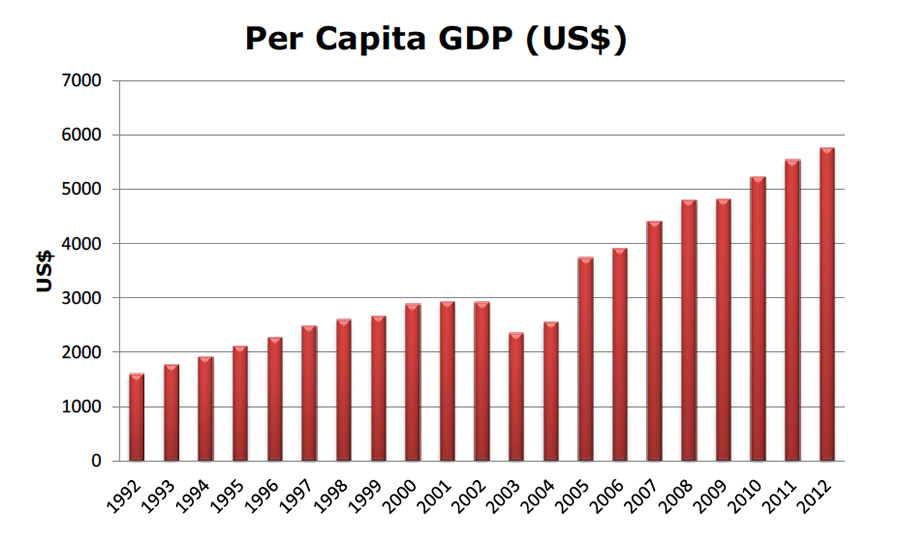
Energy market
Power demand maintained constant during the period 2003 – 2008, around 1,900 MW per year.
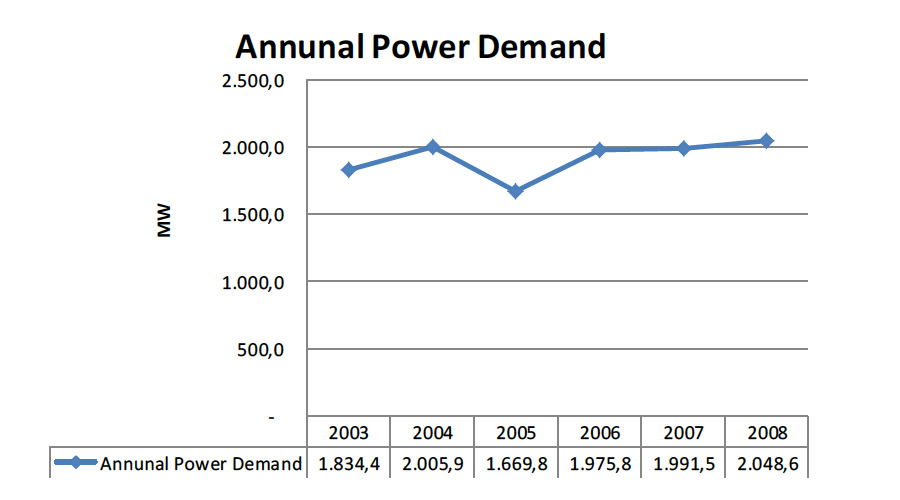
Looking to the supply side, the installed capacity in 2007 was 3,394 MW and almost 86% was covered by fossil resources and natural gas. Renewable energy and hydro energy in particular, contributed only partially on demand coverage, as shown in the picture below.
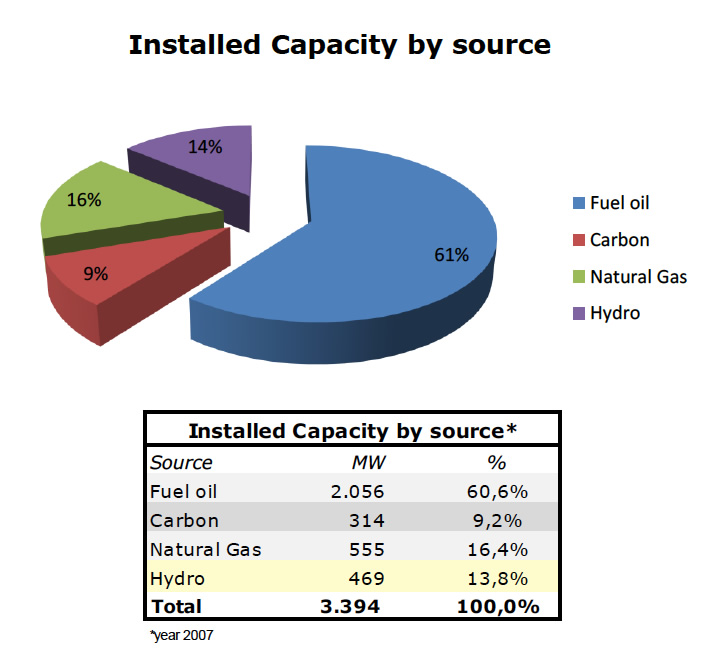
As explained in the above table, power supply in Dominican Republic is based on thermal power plant affecting marginal cost of energy and, as a consequence energy price.
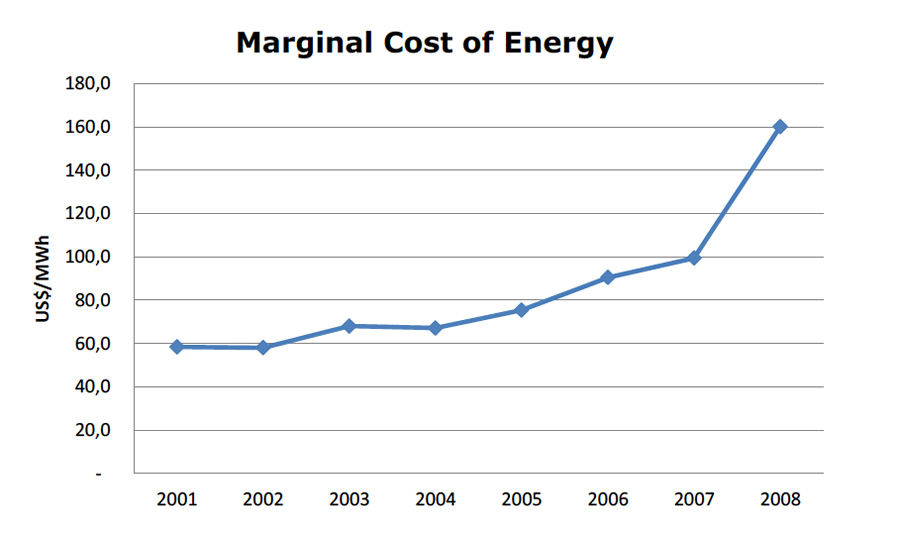
DOMINICAN LEGISLATIVE FRAMEWORK
Legislative framework for the Electricity Sector
The Dominican legislative framework for the electricity sector follows the example of the Chilean regulatory framework and the Bolivian capitalization regime. Before 1999 when the energy sector reform took place, 71% of the installed capacity was owned by the State. In 1997 with the Law 141, the Government started to reform energy sector by implementing a deregulation and by fostering private investment in the energy companies, leaving the State to control and regulate the sector. The above mentioned deregulation process was realized by separating the generation, transmission and distribution of energy. In 2001 the Government enacted the Law 125, another important step in the reforming process. This Law established the new legislative framework for the sector, together with the three institution responsible for its control and management:
- Superintendencia de Electricidad. It develops, enforces and analyzes the structure and level of electricity prices; prevents monopolistic practicies and behavior; analyzes and processes applications for grants; presides over the Organismo Coordinador
- Comisión Nacional de Energia. It develops and coordinates legal and regulatory projects; Proposes and adopts standards and policies; promotes investments in accordance with the development plans of the sector
- Organismo Coordinador. It plans and coordinates the operation of power generating plants and of the transmission and distribution lines.
The need to reduce the dependence on fossil fuels led the Government to focus on renewable energy sources with the aim of creating a clean and sustainable energy matrix for the development of the Country. For this purpose in 2007 was enacted the Law 57-07 “Sobre Incentivo al Desarrollo de Fuentes Renovables de Energía y sus Regímenes Especiales”, which provides the incentive regime for the development of renewable energy sources and in 2008 its implementing regulation 202-08 was issued.
Authorization Process
The authorization process is mainly based on the content of the implementing regulation 202- 08. The status of authorization process for Paso Bajito HEPP project stands as follows:
- Divert water Concession: INDRHI has issued to Evyp Caribe S.r.l. a 2 years temporary concession for the use of water and this will be followed by a definitive concession which has already been required by Evyp Caribe
- Licence: October 30, 2012 the Comisión Nacional de Energía and Evyp Caribe S.r.l. signed a contract which represents the licence for construct, install, operate and maintain a small hydroelectric power plant with a power capacity of up to 4 MW
- Authorization for the Commissioning of Electrical Works: to be achieved
- Environmental Permit: an environmental permit having a duration of 5 years has been issued to Evyp Caribe S.r.l in 2011
- Connection Agreement: the executive project for the connection to the national grid must be submitted and approved by authorities. Evyp Caribe is also required to sign a contract for the connection to the grid of the Paso Bajito power plant
- Local municipalities authorizations: The authorizations from local municipalities involved in the project has been granted
Lands
The project involves 2 plots. In one plot there is evidence of property title; for the other one, Evyp Caribe S.r.l. is still waiting to formalize the procedures required to give public evidence of the transfer of title to Evyp Caribe S.rl. Additional lands will be involved in the authorization process if the case may be.